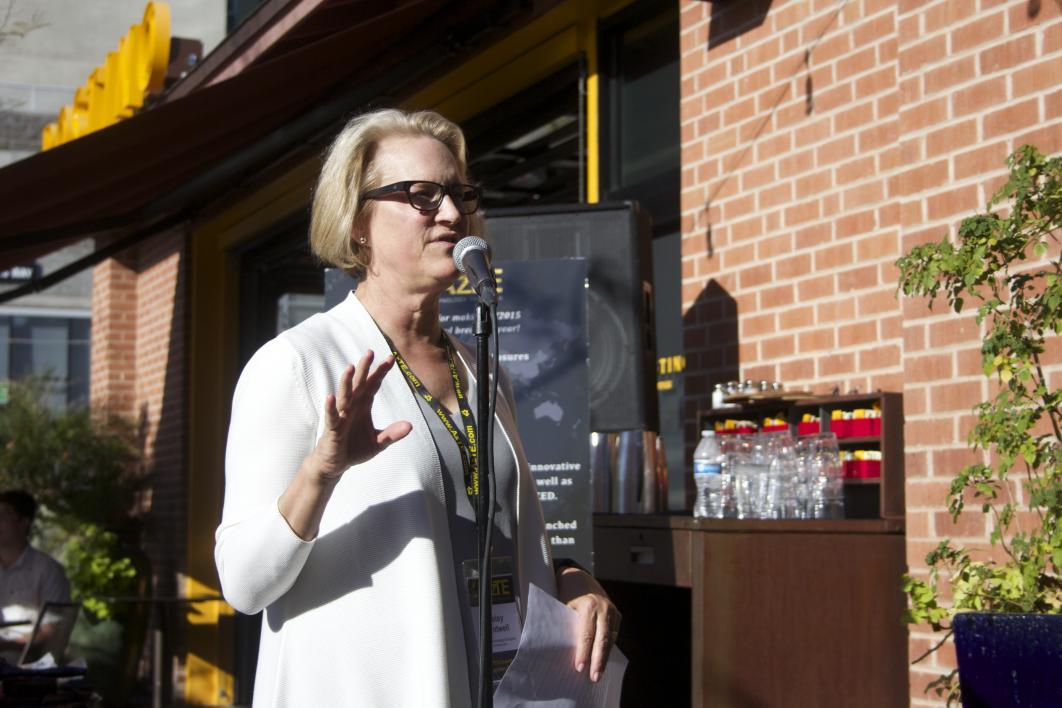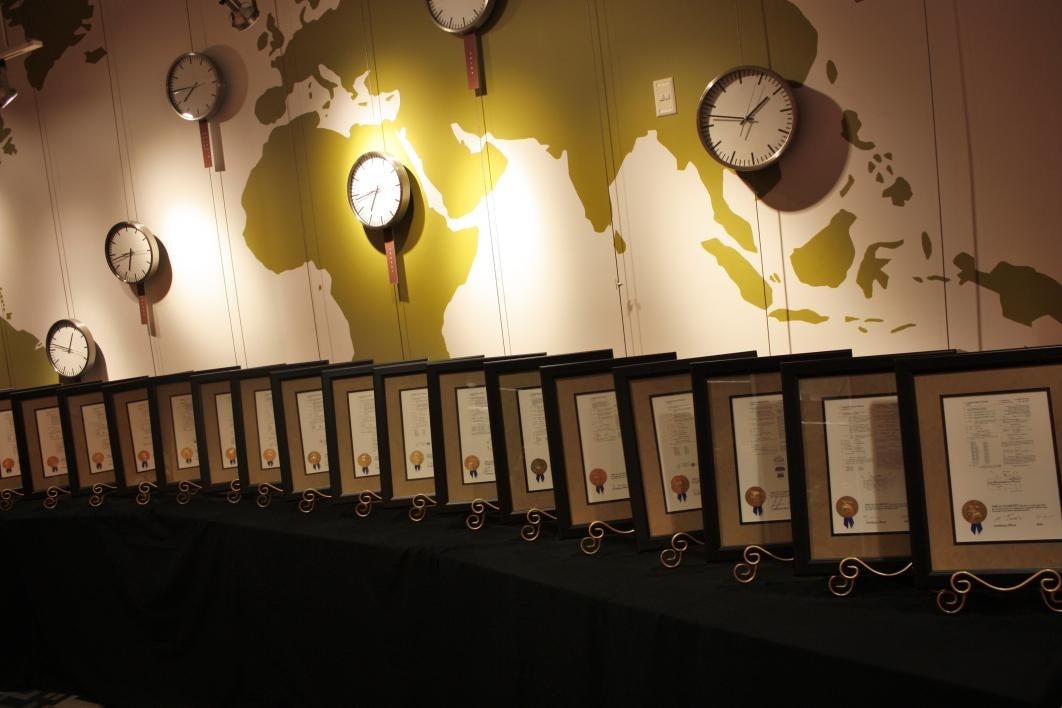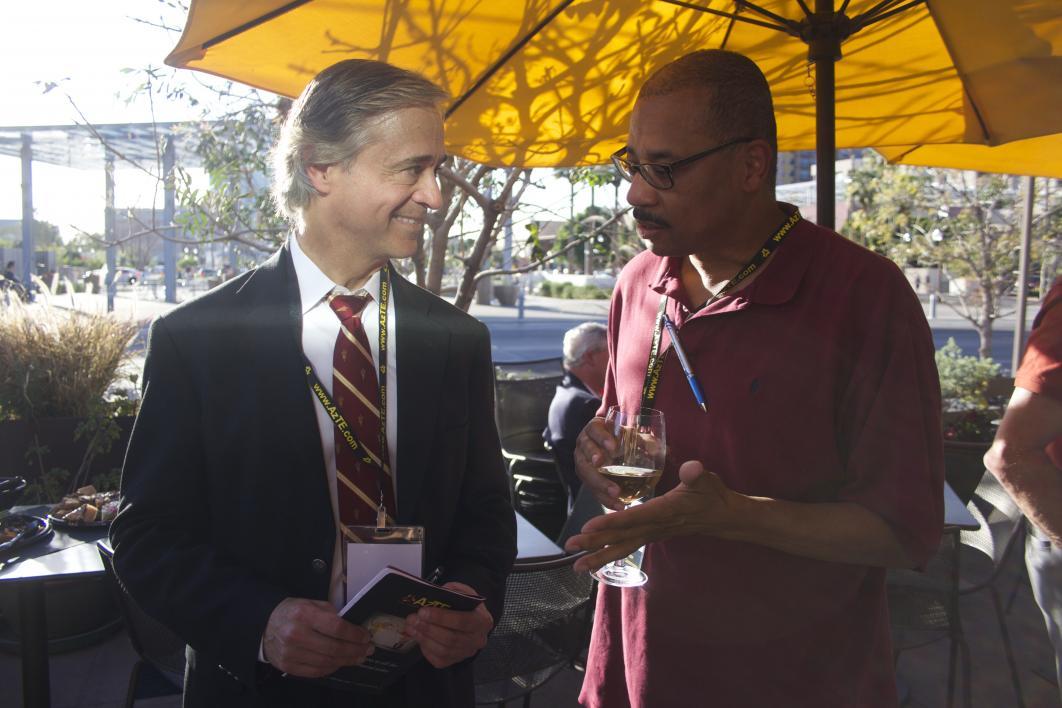Inventive ASU faculty recognized for record-breaking year

Arizona Technology Enterprises (AzTE) recently celebrated a record-breaking year for the number of inventions, patents and start-up companies that have come out of Arizona State University.
Arizona Technology Enterprises (AzTE) recently celebrated a record-breaking year for the number of inventions, patents and start-up companies that have come out of Arizona State University.
During fiscal year 2015, ASU faculty were issued 62 U.S. patents, launched 12 new start-up companies and submitted 270 invention disclosures to AzTE, ASU’s intellectual property management and technology transfer organization.
Since its inception, AzTE has fostered the launch of more than 80 companies based on ASU innovations and attracted more than $500 million in external funding, including $40 million in fiscal year 2015 alone.
Elizabeth “Betsy” Cantwell, vice president for research development of ASU’s Knowledge Enterprise Development (KED), noted how remarkable it was for the faculty being honored to take an idea and turn it into intellectual property.
“The list of patents, start-ups and licenses is phenomenal for an institution where everybody who contributed has multiple hats and multiple things they’re doing,” she said. “Most importantly, teaching a large, large number of young people.”
She addressed the challenges of the current innovation environment, where there is less money available for research and higher expectations for the rapid delivery of ideas to the commercial market.
“In that environment each of you has taken an idea all the way from its beginnings to a useful endpoint,” she said.
Michael Cleare, former executive director of the University of Pennsylvania’s Center for Technology and a member of AzTE’s board of directors since 2008, said the intellectual property output was indicative of ASU faculty’s ability to “punch above their weight” to routinely outperform research institutions with greater numbers of research faculty or expenditures.
ASU recently topped the list of “most innovative schools” in the annual U.S. News & World Report college rankings for 2016.
One faculty member who earned a patent in 2015, Ken Roland, was recognized for making a chicken vaccine to prevent necrotic enteritis — a bacterial infection that can wipe out up to half a flock.
“This vaccine will allow farmers to withdraw antibiotics from their poultry production. ...” said Roland. “This will allow the farmers to rear their chickens without using antibiotics.”
Roland, an associate research professor at the Biodesign Institute is involved in a start-up called AniVax Inc., along with Wei Kong, a research associate professor at the Biodesign Institute.
Other examples of ASU ingenuity include:
- James Aberle, Terry Alford and David Allee developed novel flexible display technology and identification systems
- Hugh Barnaby improved the reliability modeling for large-scale CMOS circuit design
- Candace Chan developed new alloys for rechargeable batteries
- Lawrence Clark had the most patents issued — nine — an incredible output that focused on integrated circuits and flexible display electronics
- Douglas Lake developed a new way of detecting Valley fever
- Jian Li developed new chemistry and complexes for novel applications in light emitting devices
- Stuart Lindsay and Peiming Zhang developed a next-generation DNA sequencer based on carbon nanotube technology, and along with Brian Ashcroft, a new start-up called Recognition Analytix LLC
- Tsafrir Mor used plants to produce a new therapeutic, called human butyrylcholinesterase, that can rapidly reverse paralysis of the airways (or apnea) caused by succinylcholine
- Kimberly Scott launched CompuGirls LLC, a culturally responsive technology program for adolescent (grades 8-12) girls from under-resourced school districts in the greater Phoenix area and in Colorado
- Kathyrn Scheckel’s start-up, Spark Open Research LLC, has created an online mentoring and research experiences program
- Bruce Towe developed a neurostimulator using semiconductor diode systems
- Willem Vermaas harnessed cyanobacteria for producing novel bioplastics and biomaterials
To build on future success, AzTE has made a one-stop shop for intellectual property development available. In 2015, AzTE and KED initiated the Startup Mill, an entrepreneurial support program that provides start-ups with mentors, resources and training, and is available for use by internal and external start-ups.
Article and photos by Ally Carr, akcarr@asu.edu, assistant science writer, Biodesign Institute
More Science and technology

ASU-led space telescope is ready to fly
The Star Planet Activity Research CubeSat, or SPARCS, a small space telescope that will monitor the flares and sunspot activity…

ASU at the heart of the state's revitalized microelectronics industry
A stronger local economy, more reliable technology, and a future where our computers and devices do the impossible: that’s the…

Breakthrough copper alloy achieves unprecedented high-temperature performance
A team of researchers from Arizona State University, the U.S. Army Research Laboratory, Lehigh University and Louisiana State…





